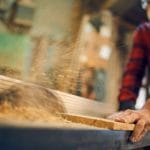It will not be wrong to say that every beef cattle are grass-fed, at least for the significant part of its life because from the early stages of its life it spends almost two-thirds time feeding on grass. Every beef cattle feed on grass until it reaches the last 160 – 180 days of its life. To begin with, grass and plants are the staple feed of cattle that continues until the animal reaches the last third of its life.
Due to various constraints like lack of grazing infrastructure, and lack of knowledge about producing grass of the desired quality during the finishing stages of the animal the majority of cattle almost 95% continue to be fattened or finished on grain during the advanced stages despite the growing demand for grass-fed beef. However, to enable beef qualify as grass fed in the real sense of the term like what you buy as peppered beef jerky, the finishing must be on grass only.
For the above reason, beef production in the US had remained and continues to be forage based industry regardless of whether it produces grass-fed beef. Only when cattle reach the end of life that the differentiation in its nomenclature happens.
Beef characteristics are different
The characteristics of beef obtained from cattle finished on grass are quite different from beef obtained from grain-fed cattle.
For beef with fat end-point 0.4 in back fat, the tenderness in beef quality is almost the same in the two types of beef whether it is from grain-fed or grass-fed cattle. However, beef from grass-fed cattle is undoubtedly much leaner than beef obtained from grain-fed cattle when compared between cattle of the same age. Therefore, the fat within the muscle of grass-fed cattle is much less as compared to grain-fed cattle.
The lower fat in grass-fed beef is a big attraction for health-conscious consumers who are keen to lower cholesterol level in the blood that can cause heart disease. Interestingly, the cholesterol level in beef which are both grass-fed and grain-fed is the same, but the lower fat consumption when eating grass-fed beef is scoring brownie points among consumers who find it a healthier option.
Forage quality is important
Finally, the quality of grass-fed beef boils down to the forage quality which is critical for beef production. When the cattle receive adequate energy from forage, it could add 2 to 2.5 lbs weight every day. However, the weight gain depends on the digestibility of forage because only if it is more than 65% and the supply of crude protein is between 14% and 18% together with 20% dry matter, and water-soluble carbohydrates is more than 20% it results in the highest daily average weight gain.
The majority of forage available in the US fails to meet the standards mentioned above which is why 95% of cattle is grain-fed, and the majority of grass-fed beef comes to the US from overseas suppliers. To pamper consumers with their choice of grass-fed beef, the US economy is draining dollars which it must continue to meet the rising demand of grass-fed beef.





